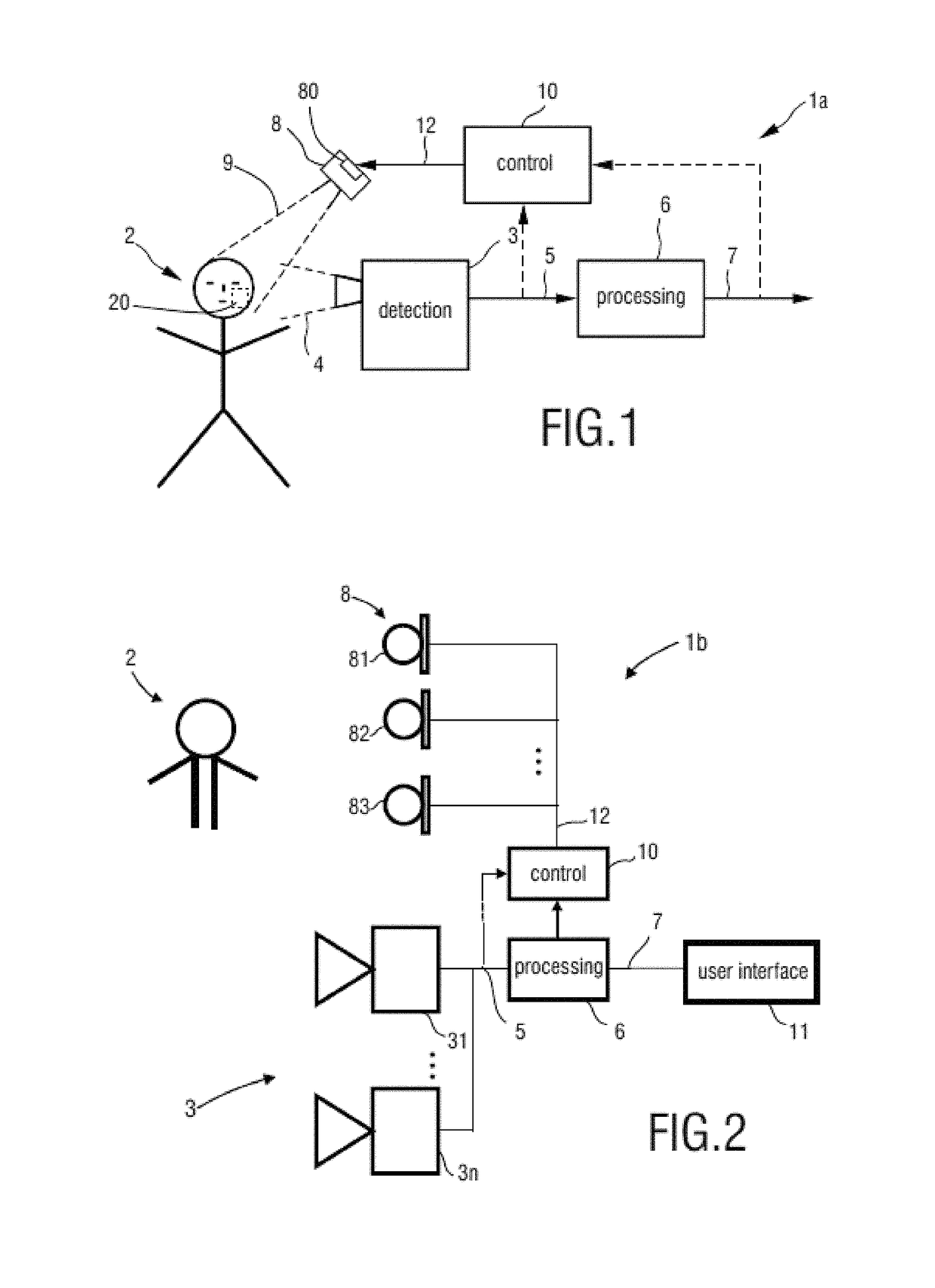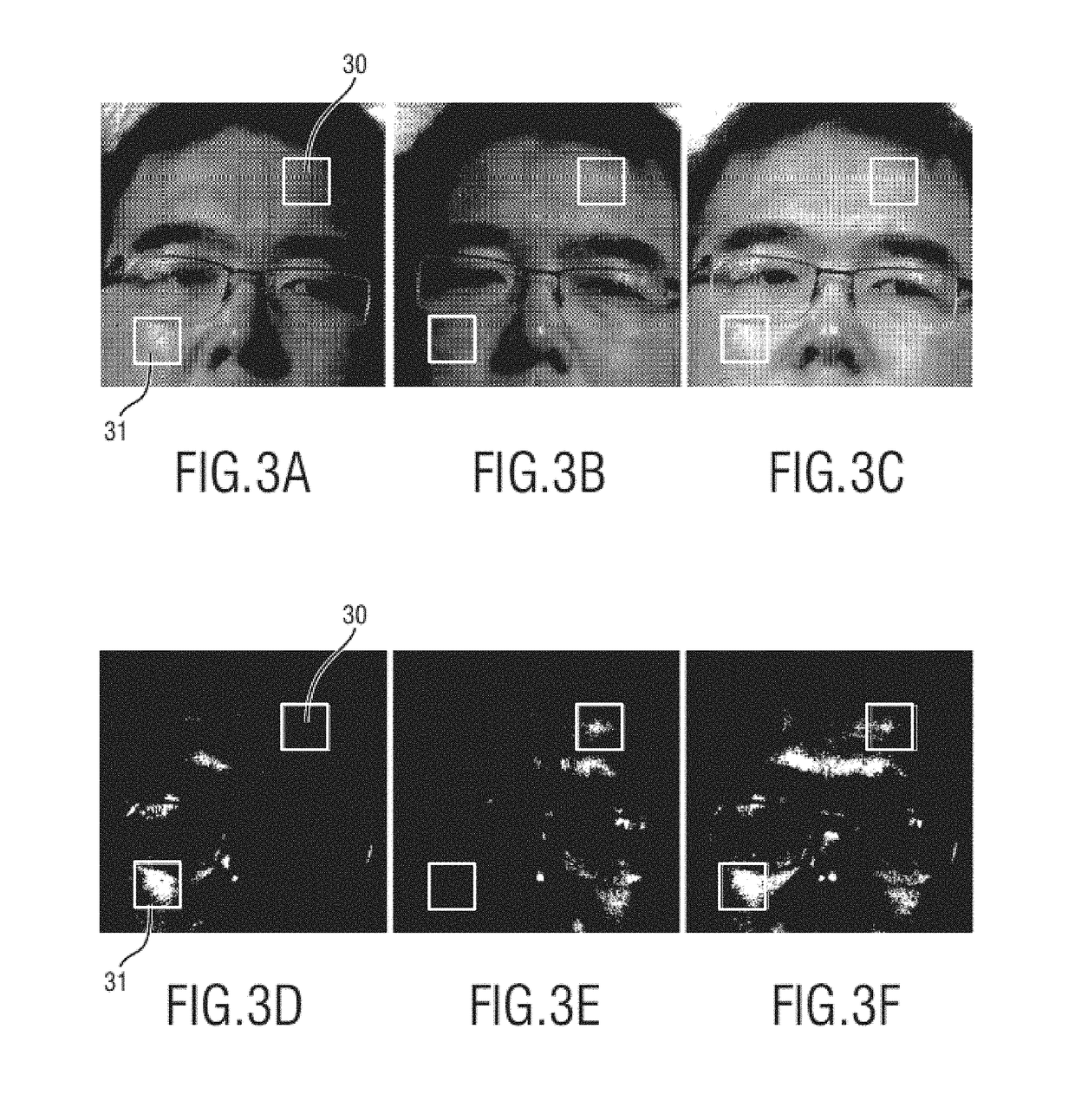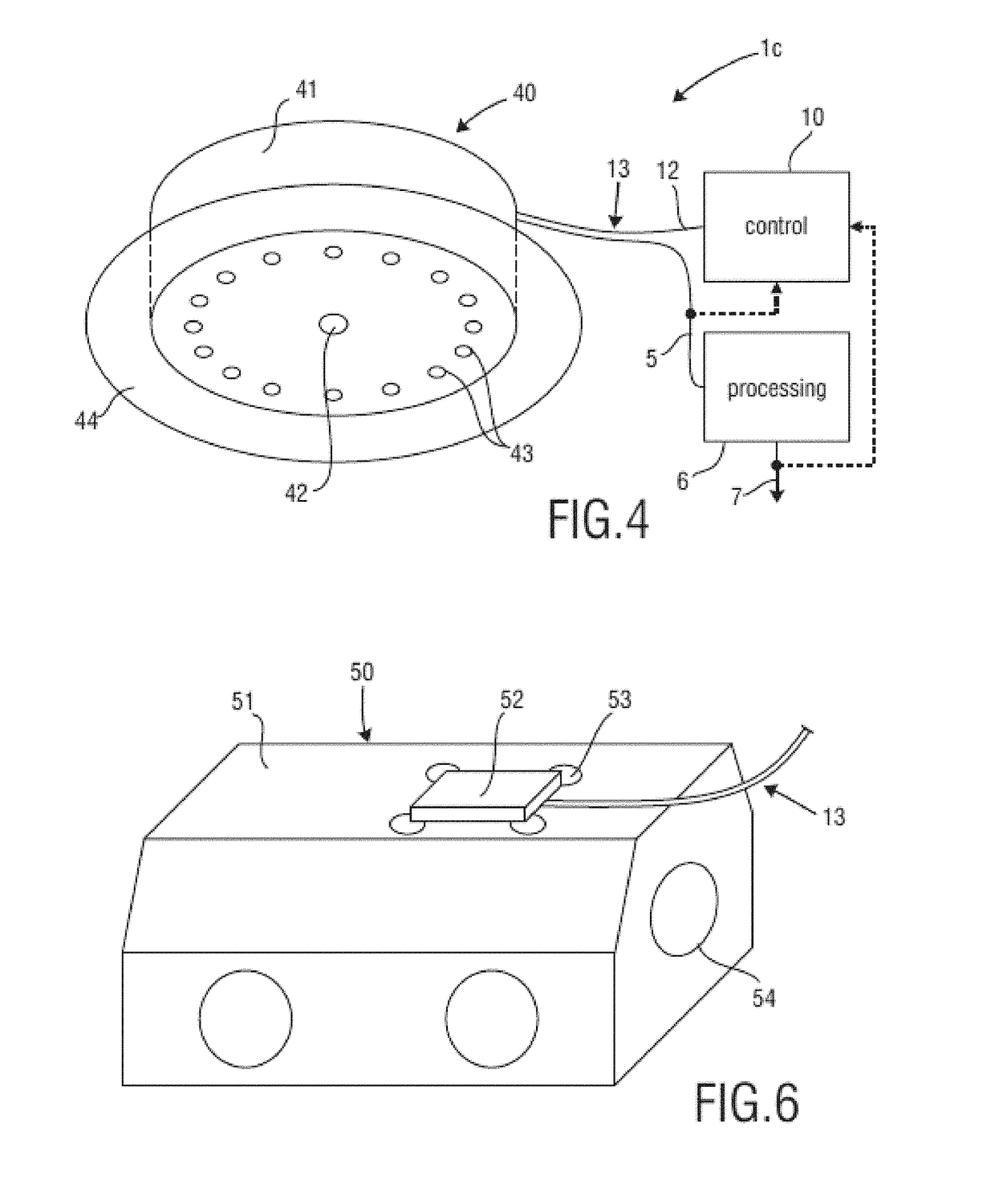Device and method for obtaining vital sign information of a living being
a technology of vital signs and devices, applied in the field of devices and corresponding methods for obtaining vital signs of living beings, can solve the problems of image-based (e.g. camera-based) vital signs monitoring, and the particular illumination is not always optimal for all measurements
- Summary
- Abstract
- Description
- Claims
- Application Information
AI Technical Summary
Benefits of technology
Problems solved by technology
Method used
Image
Examples
first embodiment
[0041]FIG. 1 shows a device 1a for obtaining vital sign information of a living being 2, e.g. a patient in a hospital, an elderly person monitored in the bed at home, a newborn infants at the NICU or a person doing sports in a fitness club, according to the present invention. The device 1a comprises a detection unit 3 for receiving light 4 in at least one wavelength interval reflected from at least a region of interest of the living being 2 and for generating an input signal 5 from the received light 4. The detection unit 3 is, for instance, configured to register spatio-temporal variations of received light and is preferably an imaging unit for taking images, such as a video camera that substantially continuously or at regular intervals takes images of the living being 2 or at least a region of interest (ROI) 20 of the living being 2.
[0042]The device 1a further comprises a processing unit 6 for processing the input signal 5 and deriving vital sign information 7 of said living being...
second embodiment
[0053]FIG. 2 shows a device 1b for obtaining vital sign information of a living being 2. The device 1b comprises a detection unit 3 including multiple detection elements 31, . . . , 3n, e.g. n cameras. Further, the device 1b comprises an illumination unit 8 including multiple adjustable illumination elements 81, 82, 83, in particular light sources such as LEDs, and a user interface 11. The cameras 31, . . . 3n are used to visually sense the subject(s) being measured under the illumination. The video signal 5 is processed and analysed in the processor 6 to derive the vital sign information 7 (e.g., an SpO2 signal), which can be visualized in the user interface 11, such as a display. The multiple illumination elements 81, 82, 83, are placed at different locations and / or with different angles and are controlled by the control unit 10, based on the camera signal 5 and / or the derived vital sign information 7.
[0054]For camera-based vital sign measurement, one or multiple regions of intere...
third embodiment
[0070]FIG. 4 shows a schematic diagram of a device 1c for obtaining vital sign information of a living being according to the present invention. In this embodiment an integrated camera frontend 40 including illumination lighting is used, which is connected to the processor 6 and the controller 10 via a cable 13 including signal lines for transmitting the input signals 5 and the control signals 12.
[0071]The integrated camera frontend 40 comprises a frontend housing 41, a camera lens 42 (behind which the camera (not shown) is arranged inside the housing, a plurality of illumination LEDs 43 and a soft suction cup ring for attaching the integrated camera frontend 40 to an incubator or other device.
[0072]In another embodiment a spot light source close to the camera is used to avoid shadows on the image and to keep the location of the field of view of camera and light small. In still another embodiment the light source is made large in area and diffuse in order to minimize the chance to c...
PUM
 Login to View More
Login to View More Abstract
Description
Claims
Application Information
 Login to View More
Login to View More - R&D
- Intellectual Property
- Life Sciences
- Materials
- Tech Scout
- Unparalleled Data Quality
- Higher Quality Content
- 60% Fewer Hallucinations
Browse by: Latest US Patents, China's latest patents, Technical Efficacy Thesaurus, Application Domain, Technology Topic, Popular Technical Reports.
© 2025 PatSnap. All rights reserved.Legal|Privacy policy|Modern Slavery Act Transparency Statement|Sitemap|About US| Contact US: help@patsnap.com



